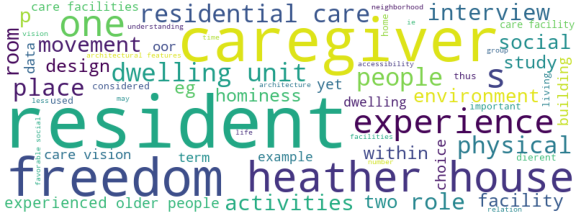| Id | 89 | |
| Author | Van Steenwinkel, I.; De Casterlé, B., D.; Heylighen, A. | |
| Title | How architectural design affords experiences of freedom in residential care for older people. | |
| Reference | Van Steenwinkel, I., de Casterlé, B. D., & Heylighen, A. (2017). How architectural design affords experiences of freedom in residential care for older people. Journal of aging studies, 41, 84-92. |
|
| Link to article | https://doi.org/10.1016/j.jaging.2017.05.001 |
|
| Abstract | Human values and social issues shape visions on dwelling and care for older people, a growing number of whom live in residential care facilities. These facilities' architectural design is considered to play an important role in realizing care visions. This role, however, has received little attention in research. This article presents a case study of a residential care facility for which the architects made considerable effort to match the design with the care vision. The study offers insights into residents' and caregivers' experiences of, respectively, living and working in this facility, and the role of architectural features therein. A single qualitative case study design was used to provide in-depth, contextual insights. The methods include semi-structured interviews with residents and caregivers, and participant observation. Data concerning design intentions, assumptions and strategies were obtained from design documents, through a semi-structured interview with the architects, and observations on site. Our analysis underlines the importance of freedom (and especially freedom of movement), and the balance between experiencing freedom and being bound to a social and physical framework. It shows the architecture features that can have a role therein: small-scaleness in terms of number of residents per dwelling unit, size and compactness; spatial generosity in terms of surface area, room to maneuver and variety of places; and physical accessibility. Our study challenges the idea of family-like group living. Since we found limited sense of group belonging amongst residents, our findings suggest to rethink residential care facilities in terms of private or collective living in order to address residents' social freedom of movement. Caregivers associated ‘hominess’ with freedom of movement, action and choice, with favorable social dynamics and with the building's residential character. Being perceived as homey, the facility's architectural design matches caregivers' care vision and, thus, helped them realizing this vision. |
|
| Keywords | architectural design; residential care facility; older people; experience; freedom; care visions |
Wordcloud:



